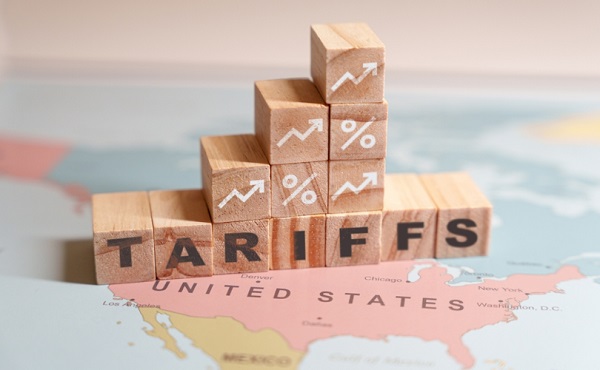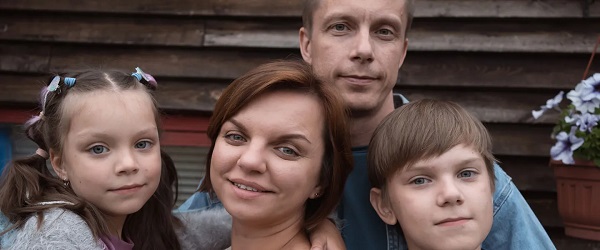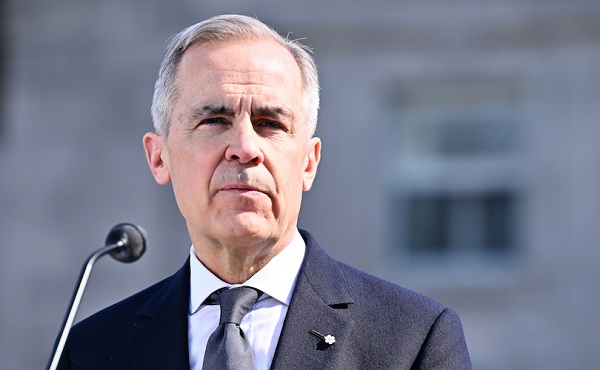Business
Natural gas pipeline ownership spreads across 36 First Nations in B.C.

Chief David Jimmie is president of Stonlasec8 and Chief of Squiala First Nation in B.C. He also chairs the Western Indigenous Pipeline Group. Photo courtesy Western Indigenous Pipeline Group
From the Canadian Energy Centre
Stonlasec8 agreement is Canada’s first federal Indigenous loan guarantee
The first federally backed Indigenous loan guarantee paves the way for increased prosperity for 36 First Nations communities in British Columbia.
In May, Canada Development Investment Corporation (CDEV) announced a $400 million backstop for the consortium to jointly purchase 12.5 per cent ownership of Enbridge’s Westcoast natural gas pipeline system for $712 million.
In the works for two years, the deal redefines long-standing relationships around a pipeline that has been in operation for generations.
“For 65 years, there’s never been an opportunity or a conversation about participating in an asset that’s come through the territory,” said Chief David Jimmie of the Squiala First Nation near Vancouver, B.C.
“We now have an opportunity to have our Nation’s voices heard directly when we have concerns and our partners are willing to listen.”
Jimmie chairs the Stonlasec8 Indigenous Alliance, which represents the communities buying into the Enbridge system.
The name Stonlasec8 reflects the different regions represented in the agreement, he said.
The Westcoast pipeline stretches more than 2,900 kilometres from northeast B.C. near the Alberta border to the Canada-U.S. border near Bellingham, Wash., running through the middle of the province.

It delivers up to 3.6 billion cubic feet per day of natural gas throughout B.C. and the Lower Mainland, Alberta and the U.S. Pacific Northwest.
“While we see the benefits back to communities, we are still reminded of our responsibility to the land, air and water so it is important to think of reinvestment opportunities in alternative energy sources and how we can offset the carbon footprint,” Jimmie said.
He also chairs the Western Indigenous Pipeline Group (WIPG), a coalition of First Nations communities working in partnership with Pembina Pipeline to secure an ownership stake in the newly expanded Trans Mountain pipeline system.
There is overlap between the communities in the two groups, he said.
CDEV vice-president Sébastien Labelle said provincial models such as the Alberta Indigenous Opportunities Corporation (AIOC) and Ontario’s Indigenous Opportunities Financing Program helped bring the federal government’s version of the loan guarantee to life.
“It’s not a new idea. Alberta started it before us, and Ontario,” Labelle said.
“We hired some of the same advisors AIOC hired because we want to make sure we are aligned with the market. We didn’t want to start something completely new.”
Broadly, Jimmie said the Stonlasec8 agreement will provide sustained funding for investments like housing, infrastructure, environmental stewardship and cultural preservation. But it’s up to the individual communities how to spend the ongoing proceeds.
The long-term cash injections from owning equity stakes of major projects can provide benefits that traditional funding agreements with the federal government do not, he said.
Labelle said the goal is to ensure Indigenous communities benefit from projects on their traditional territories.
“There’s a lot of intangible, indirect things that I think are hugely important from an economic perspective,” he said.
“You are improving the relationship with pipeline companies, you are improving social license to do projects like this.”
Jimmie stressed the impact the collaborative atmosphere of the negotiations had on the success of the Stonlasec8 agreement.
“It takes true collaboration to reach a successful partnership, which doesn’t always happen. And from the Nation representation, the sophistication of the group was one of the best I’ve ever worked with.”
Banks
Liberal border bill could usher in cashless economy by outlawing cash payments

From LifeSiteNews
Bill C-2 has raised concerns from legal organizations that warn it could lead to a cashless economy in Canada by banning cash payments over $10,000.
The Liberals’ proposed border legislation may quietly usher in a cashless economy by banning cash payments.
On June 3, the Liberal Party introduced Bill C-2 to strengthen border security and outlaw cash payments over $10,000. Legal organizations have since warned that this is the first step to a cashless economy and digital ID system in Canada.
“Part 11 amends the Proceeds of Crime (Money Laundering) and Terrorist Financing Act to prohibit certain entities from accepting cash deposits from third parties and certain persons or entities from accepting cash payments, donations or deposits of $10,000 or more,” the legislation proposes.
While the bill purports to strengthen border security and restore Canada-U.S. relations, many have warned that government regulation of cash payments is a slippery slope.
In a June 4 X post, the Justice Centre for Constitutional Freedoms (JCCF) warned that “If Bill C-2 passes, it will become a Criminal Code offence for businesses, professionals, and charities to accept cash donations, deposits, or payments of $10,000 or more. Even if the $10,000 payment or donation is broken down into several smaller cash transactions, it will still be a crime for a business or charity to receive it.”
The JCCF pointed out that while cash payments of $10,000 are not common for Canadians, the government can easily reduce “the legal amount to $5,000, then $1,000, then $100, and eventually nothing.”
“Restricting the use of cash is a dangerous step towards tyranny and totalitarianism,” the organization warned. “Cash gives citizens privacy, autonomy, and freedom from surveillance by government and by banks, credit card companies, and other corporations.”
“If we cherish our privacy, we need to defend our freedom to choose cash, in the amount of our choosing,” it continued. “This includes, for example, our right to pay $10,000 cash for a car, or to donate $10,000 (or more) to a charity.”
“Law enforcement already has the tools to fight crime,” JCCF declared. “Perhaps they need a bigger budget to hire more people, or perhaps they need to use existing tools more effectively. In a free society, violating our right to use cash is not the answer.”
A move to restrict Canadians’ use of cash is especially concerning as citizens already saw what a Liberal government will do to those who oppose its narrative during the 2022 Freedom Convoy.
In winter 2022, the Liberal government, under former Prime Minister Justin Trudeau, froze the bank accounts of those who donated to the Freedom Convoy, which featured thousands of Canadians camping in front of Parliament to protest COVID mandates.
Similarly, Liberal Prime Minister Mark Carney’s move to restrict Canadians is hardly surprising considering his close ties to the World Economic Forum and push for digital currency.
In a 2021 article, the National Post noted that “since the advent of the COVID pandemic, Carney has been front and centre in the promotion of a political agenda known as the ‘Great Reset,’ or the ‘Green New Deal,’ or ‘Building Back Better.’
“Carney’s Brave New World will be one of severely constrained choice, less flying, less meat, more inconvenience and more poverty,” the outlet continued.
In light of Carney’s new leadership over Canadians, many are sounding alarm over his distinctly anti-freedom ideas.
Exposing Mark Carney:
“Should sex be up for sale” 😮
“Should there be a market for the right to have children?” 🤯 pic.twitter.com/Q4hftgGIMc
— Mario Zelaya (@mario4thenorth) March 21, 2025
Carney, whose ties to globalist groups have had Conservative Party leader Pierre Poilievre call him the World Economic Forum’s “golden boy”. He has also previously endorsed the carbon tax and even criticized Trudeau when the tax was exempted from home heating oil in an effort to reduce costs for some Canadians.
Carney, who as reported by LifeSiteNews, has admitted he is an “elitist” and a “globalist.” Just recently, he criticized U.S. President Donald Trump for targeting woke ideology and has vowed to promote “inclusiveness” in Canada.
Carney also said that he is willing to use all government powers, including “emergency powers,” to enforce his energy plan.
Business
Bank of Canada Flags Challenges Amid Absence of Federal Budget
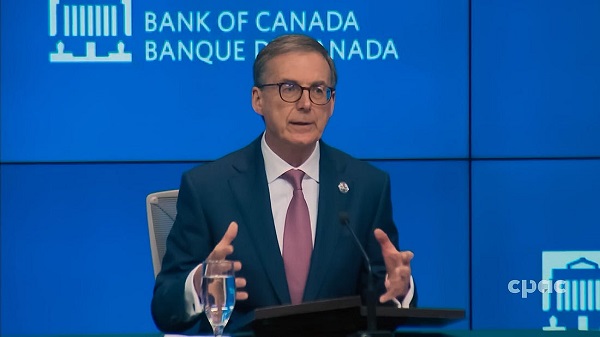

 Dan Knight
Dan Knight
Governor Tiff Macklem signals the central bank is flying blind as Mark Carney’s Liberal government withholds fiscal plans, leaving Canadians to face rising prices and economic uncertainty.
The Bank of Canada—yes, the people in charge of stabilizing your currency, protecting your savings, and guiding the economy through the storm—held a press conference. The takeaway? They have no idea what’s going on.
If you missed it, Governor Tiff Macklem stood at the podium and told Canadians, with a straight face, that the Bank is keeping interest rates unchanged at 2.75%. Now, if you’re expecting that decision to come with some clarity, a plan, maybe even a roadmap for the months ahead—don’t hold your breath.
Why? Because Macklem said the Bank’s navigating ‘unusual uncertainty’ from U.S. trade moves, and they’re too unsure to pin down a forecast. Instead, they’re waiting for more numbers to make sense of the mess.
Just pause and think about that for a second. The central bank of one of the wealthiest nations on Earth—tasked with steering the economy—is flying blind.
But don’t worry, we were told. A rate cut might come in July. Maybe. Depending on how inflation behaves. Depending on how the economy holds up. Depending on a whole list of things no one can actually predict right now. Macklem says it depends on inflation being “contained.” But look around—consumer spending is falling, housing is slowing down, and people are losing jobs in sectors tied to trade. And he knows it.
He said, “The second quarter is expected to be much weaker.” Why? Because the growth we saw earlier this year was a mirage. Canadian companies rushed to export goods before U.S. tariffs hit. That inflated Q1 GDP to 2.2%. Now the adrenaline is gone and reality is setting in.
He didn’t say we’re in trouble. But he didn’t need to. When your central banker says growth was “pulled forward” and Q2 will be “much weaker,” he’s telling you the economy is already running on fumes.
And then there’s inflation. Now, according to the headlines, inflation dropped to 1.7% in April. Sounds good, right? Until you look at why. The reason inflation dropped is because the federal government eliminated the carbon tax, which temporarily lowered gas prices. That policy change alone knocked 0.6 percentage points off inflation. Not because goods got cheaper—because the tax man backed off for once.
Meanwhile, core inflation—the kind that actually matters—went up. Higher food prices, rising goods prices, supply chain costs—it’s all hitting Canadian businesses and families right now. Macklem even said it himself: “Underlying inflation could be firmer than we thought.”
So what does the Bank do when prices are rising for the wrong reasons and growth is falling for the right ones? Apparently, they wait. They gather “intel” from business owners and talk about “soft data.” That’s the technical term now: soft data.
But the real kicker—what’s actually driving a lot of this chaos—is U.S. trade policy. Tariffs are back. Yes, tariffs on Canadian steel and aluminum were doubled again. And Macklem admitted that unpredictability is the biggest threat we’re facing. He said: “The trade conflict initiated by the United States remains the biggest headwind facing the Canadian economy.”
And what has Canada done to protect itself from that risk? Absolutely nothing.
In fact, Macklem came right out and admitted it. He said Canada’s overdependence on U.S. trade has been obvious for years. Here’s the quote:
“Canada’s trade is very concentrated with the United States. Look, it’s always going to be concentrated with the United States… but that doesn’t mean we can’t diversify our trade.”
So the solution has been obvious for decades. Diversify our exports. Strengthen our own internal market. Get serious about reducing interprovincial trade barriers—yes, those still exist in this country. But none of it happened. None of it. Not under Trudeau. Not under Chrystia Freeland. And certainly not under the new “caretaker” prime minister, Mark Carney—Trudeau’s old global finance buddy.
The Deafening Silence from Ottawa: No Budget, No Plan, No Leadership
Now, let’s talk about what Tiff Macklem didn’t say—but might as well have.
At a time when Canadians are facing real economic stress—on housing, food, jobs, and savings—the Liberal government under Mark Carney has failed to table a federal budget. Let that sink in. We’re halfway through 2025, inflation is shifting, trade policy is in turmoil, and the federal government has not provided a single fiscal blueprint.
This isn’t just a minor oversight. In a presser filled with caution, hedging, and uncertainty, Macklem was asked point-blank how the lack of a spring budget is affecting the Bank’s ability to do its job. His answer? Chilling in its understatement:
“Whatever announcements come out of the government that are… concrete, clear plans with numbers on them—we will take those on board.”
But here’s the thing: there are no numbers. There are no “concrete” plans. There is no spring budget. Which means the Bank of Canada is operating without a fiscal anchor.
And that’s not a partisan jab. That’s a direct acknowledgment from the central bank governor. Monetary policy doesn’t exist in a vacuum. It relies on fiscal policy—how much Ottawa plans to spend, what kind of debt it’s taking on, whether it’s injecting or withdrawing demand from the economy. Without that information, the Bank is effectively being asked to navigate blindfolded.
Macklem was careful, as central bankers always are, but he sent a signal to anyone paying attention: the absence of fiscal clarity is a problem. In his words, it “complicates monetary policy planning.” That’s about as blunt as a central banker gets.
Yet in a moment of unintended honesty, he added this:
“To be frank, the budget is not the biggest source of uncertainty… It’s U.S. tariffs.”
Well, sure. America’s economic unpredictability is real. But what Macklem didn’t say—but we all know—is this: Canada’s lack of internal leadership is a close second. And that’s the part Ottawa doesn’t want to talk about.
And here’s the part that’s impossible to ignore, even if every outlet in this country refuses to say it: Mark Carney knows better.
He used to run central banks. That’s his entire résumé. He understands, better than anyone, that monetary policy doesn’t function in a fiscal vacuum. He knows the Bank of Canada requires a federal budget to plan ahead. He knows you can’t forecast inflation or economic activity if the federal government won’t even tell you how much it plans to spend, borrow, or tax. That’s not some fringe economic theory, that’s Monetary Policy 101.
And yet, despite knowing all of this, Carney is choosing not to deliver a budget. He’s actively keeping the Bank of Canada in the dark. Why?
Well, maybe it’s because he doesn’t want to show you the numbers. Because the numbers are bad. Because the spending is out of control. Because the debt is spiraling. Because if he puts it all on paper, if he gives us the hard data, then suddenly, the opposition can do what it’s supposed to do: hold his government to account.
And maybe, just maybe, Carney doesn’t want that. Not yet. Not so early in his reign as Trudeau’s heir. He doesn’t want the Conservative Party pulling apart his economic plan, and he certainly doesn’t want the Canadian people realizing that we are not collecting retaliatory tariffs on U.S. goods, even as the Americans hammer us again with steel and aluminum levies.
He doesn’t want you to see the imbalance. Because if you did, if the average Canadian saw how weak and passive this country has become in the face of American economic aggression, you’d be furious. You’d demand answers. You’d demand change.
But instead, its all, “elbows down.” Quietly filtered out of the official narrative. No plan, no numbers, no debate—just vague promises, half-hearted reassurances, and a press conference where your central banker admits he’s guessing.
And you, the ordinary Canadian, are stuck with the consequences. You feel it every time you go to the grocery store. Food prices are still climbing. The latest inflation data shows that even as headline numbers tick down, your groceries are getting more expensive. Your paycheque isn’t going as far. And nobody in power seems to care enough to fix it.
So here’s the truth: the system is rigged. Not in some conspiratorial way, but in the most obvious, bureaucratic, cowardly way imaginable. Those in charge know the damage they’re causing. They just don’t want to be blamed for it.
And as always, it’s the people who work, save, and pay taxes—the people who still believe in this country—who get left holding the bag.
So the next time they tell you “everything is under control,” ask yourself: whose hands are on the wheel?
Because right now, it sure doesn’t look like anyone is driving.
Good-day, Canada.
Subscribe to The Opposition with Dan Knight .
For the full experience, upgrade your subscription.
-

 Banks2 days ago
Banks2 days agoLiberal border bill could usher in cashless economy by outlawing cash payments
-

 Alberta22 hours ago
Alberta22 hours agoToo Graphic For A Press Conference But Fine For Kids In School?
-
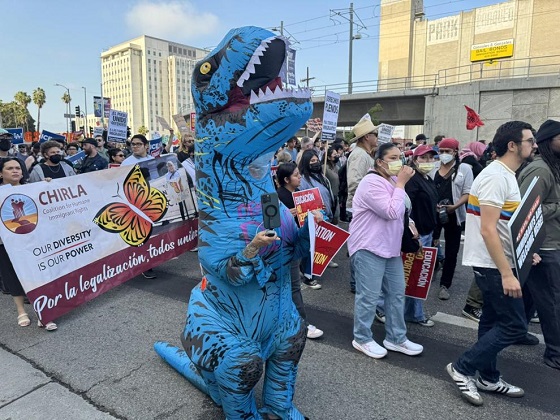
 illegal immigration22 hours ago
illegal immigration22 hours agoNational Guardsmen arrive in response to LA’s ‘violent mobs’
-
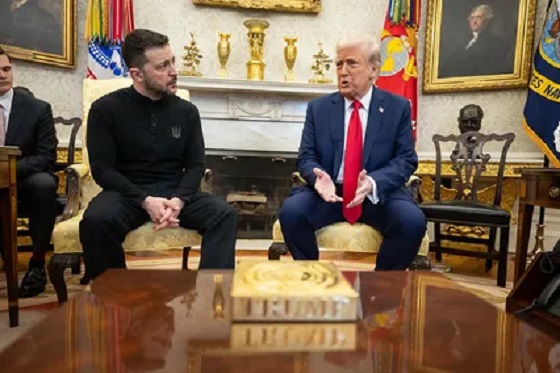
 conflict22 hours ago
conflict22 hours agoTrump says Ukraine war may need to play out before peace is possible
-
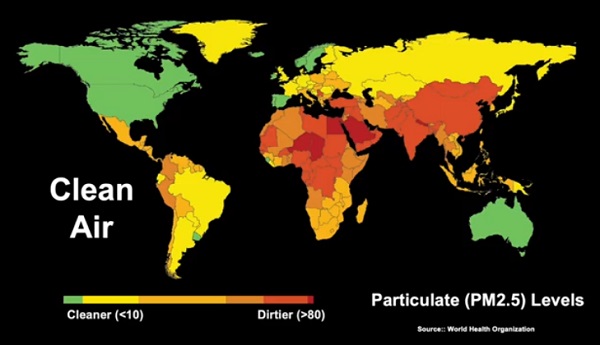
 Energy21 hours ago
Energy21 hours agoAffordable Energy: Everything you need to know about energy and the environment
-

 illegal immigration8 hours ago
illegal immigration8 hours agoTrump deploys National Guard to Los Angeles after violent attacks on ICE agents
-

 Crime8 hours ago
Crime8 hours agoHow Chinese State-Linked Networks Replaced the Medellín Model with Global Logistics and Political Protection
-

 COVID-192 days ago
COVID-192 days agoA COVID-19 day of reckoning is long overdue
